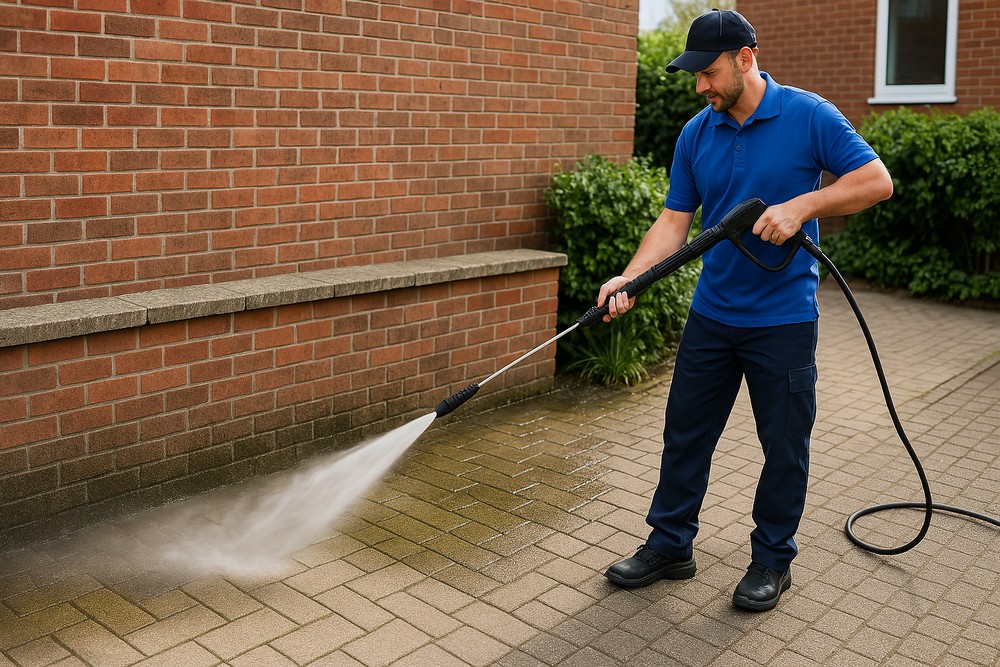Pressure jet washing is one of the most effective ways to clean outdoor surfaces, removing dirt, grime, mold, and stubborn stains. Whether you’re refreshing your driveway, patio, or siding, a pressure washer can restore your home’s exterior to its original beauty. In this guide, we’ll cover everything you need to know about pressure jet washing, including benefits, tools, techniques, and safety tips.
Why Pressure Jet Washing is Essential
Over time, outdoor surfaces accumulate dirt, moss, algae, and pollutants, making them look worn and neglected. Regular pressure washing offers numerous benefits:
- Enhances curb appeal – A clean exterior makes your property look well-maintained and inviting.
- Prevents damage – Mold, mildew, and grime can weaken surfaces over time, leading to costly repairs.
- Improves safety – Removes slippery moss and algae from walkways and driveways, reducing the risk of falls.
- Increases property value – A well-maintained home exterior adds to its market value.
Essential Pressure Washing Equipment
To achieve professional results, you’ll need the right tools:
- Pressure washer – Available in electric or gas-powered models.
- Nozzles and spray tips – Different angles control water pressure for various surfaces.
- Cleaning detergents – Specialized solutions help break down grime.
- Safety gear – Goggles, gloves, and non-slip footwear.
- Extension wands and surface cleaners – Useful for hard-to-reach areas.
Step-by-Step Pressure Washing Guide
1. Choose the Right Pressure Washer
- Electric pressure washers – Ideal for light cleaning tasks like patios, decks, and cars.
- Gas pressure washers – More powerful and suitable for deep cleaning concrete, brick, and large areas.
2. Select the Correct Nozzle
Pressure washer nozzles are color-coded for different spray angles:
- Red (0°) – Extremely powerful, best for tough stains on hard surfaces.
- Yellow (15°) – Ideal for heavy-duty cleaning like driveways and sidewalks.
- Green (25°) – General-purpose cleaning for decks, patios, and fences.
- White (40°) – Gentle cleaning for windows, siding, and vehicles.
- Black (Soap nozzle) – Used for applying detergents.
3. Pre-Treat Stains and Dirt
For tough stains, apply a suitable cleaning solution and let it sit for 5-10 minutes before pressure washing.
4. Start Washing from Top to Bottom
Begin at the highest point and work downward to prevent streaking. Keep the nozzle moving in smooth, overlapping strokes.
5. Rinse and Let Dry
After washing, rinse thoroughly with clean water and allow the surface to dry completely.
Best Surfaces for Pressure Washing
| Surface | Recommended Pressure |
| Driveways & Concrete | 2500-3000 PSI |
| Decks & Wood Fences | 1500-2000 PSI |
| Vinyl & Brick Siding | 1300-2000 PSI |
| Cars & Outdoor Furniture | 1200-1500 PSI |
Safety Tips for Pressure Washing
- Never aim the pressure washer at people, pets, or windows.
- Test the pressure on a small, inconspicuous area first.
- Use appropriate detergents for each surface.
- Wear protective gear to prevent injury.
When to Hire a Professional Pressure Washing Service
For large-scale projects or delicate surfaces, hiring a professional ensures optimal results without the risk of damage.
Final Thoughts
Pressure jet washing is a powerful way to clean and restore outdoor surfaces, making them look brand new. By following these tips and techniques, you can achieve professional-level results while keeping your home’s exterior in top condition.
For more expert cleaning tips, stay tuned to our blog!
Get a Free Quote Today!
Ready for a cleaner, healthier workplace? Contact us today for a free consultation and customized cleaning plan.
• Call Us: 0203 637 9854
• Email: info@clinzesersltd.com
• Location: London & Home Counties

